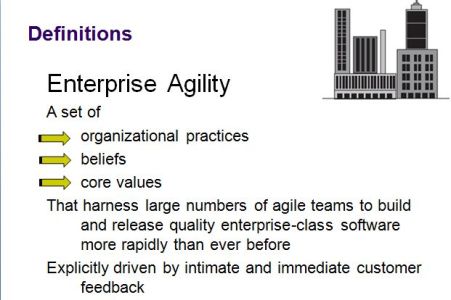Salesforce.com recently completed an agile transformation involving a two-hundred person team in a three month window. Wow, that’s the big bang approach to be certain. My friend Pete Behrens was involved in this work, so you know it’s good work and you can can find the case study at:
http://trailridgeconsulting.com/files/salesforce_agile_adoption_2007.pdf
As is often the case, the “lessons learned” are the pithiest part. In short, Salesforce recommends:
1) have executive commitment to the change
2) create a dedicated rollout team to facilitate the change
3) focus on principles over mechanics
4) focus early on automation and continuous integration
5) provide radical transparency
6) leverage external agile training and coaching.

